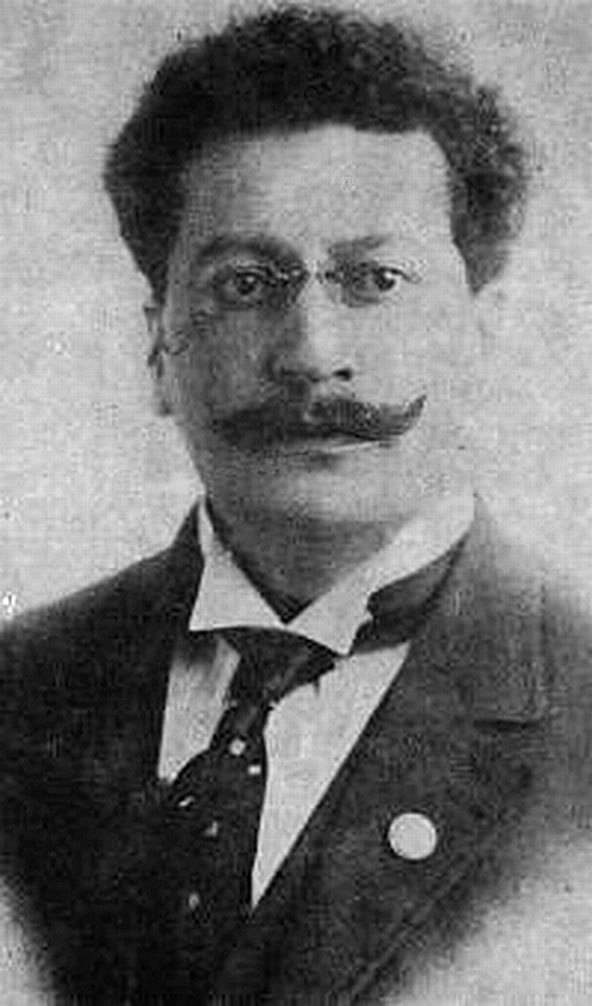 |
| Ricardo Flores Magón |
His father was Teodoro Flores, a Zapotec Indian, and his mother was Margarita Magón, half Indian and half Spanish. Teodoro was a strong believer in the communal ownership of land, and his ideas influenced his sons Ricardo, Jesús, and Enrique.
When he was nine Ricardo started attending the Escuela Nacional Primaria in Mexico City. He proceeded to the Escuela Nacional Preparatora and on May 16, 1892, took part in a large demonstration against the Mexican president, Porfirio Díaz. The crowd of 15,000 demanded the end of the Díaz dictatorship, and many were arrested, with Ricardo Flores sentenced to five months in prison for sedition.
On his release, Ricardo started working as a proofreader for the El Democrata newspaper. In April 1893 the newspaper office was raided, and although most of the staff members were arrested, Ricardo managed to escape.
  |
In hiding for three months, he emerged to complete his law degree and become a lawyer. On August 7, 1900, he published the newspaper Regeneracion with the support of his brother Enrique. It was an overtly anarchist newspaper and was directly critical of the Diaz dictatorship.
Ricardo Flores was hugely affected by his reading of the works of the Russian anarchist Peter Kropotkin. Some of his ideas can also be traced to Karl Marx and the Norwegian playwright Henrik Ibsen.
In 1901 Ricardo Flores got in trouble with the government by calling for the resignation of Mexican president Porfirio Díaz. Ricardo and his older brother, Jesus, were arrested on May 22 and sentenced to 12 months in prison for "insulting the president."
They spent the next 11 months in jail, during which time their mother died. Both sons were refused permission to leave Belem Prison to see her before she died. Regeneracion was still being printed while the two brothers were in prison, but publication was finally suspended in October, when Díaz threatened to shoot Ricardo if it did not.
Released on April 30, 1902, Ricardo and his younger brother, Enrique, were both arrested on September 12 and sentenced by a military tribunal to four months in prison for "insulting the army." They were released on January 23, 1903. By this time, Díaz was tired of dealing with the Flores brothers and offered Ricardo a government position.
However, he declined and started running the newspaper El Hijo del Ahuizote, which gained a circulation of 24,000. On April 16 Ricardo was again arrested and jailed until October. On June 9 the supreme court of Mexico banned the publication of any article by Ricardo Flores.
On their release in October 1904, Ricardo and Enrique decided to move to the United States and settled in San Antonio, Texas, to avoid being arrested again. There they issued a second version of Regeneracion, and in December 1904 a man forced his way into the Flores house and tried to stab Ricardo. Enrique saved his brother's life but was fined for assaulting the hired assassin, who was freed.
Then came pressure on the local government from San Antonio businessmen, causing Flores to move to St. Louis, Missouri, where he issued a third version of the newspaper, with circulation rising to as high as 30,000. In 1905 he joined with others to form the organising junta of the Mexican Liberal Party.
Ricardo Flores had influenced many U.S. anarchists and on March 21, 1918, he was arrested under the Sedition Act for "obstructing the war effort." On August 15, after a trial held in camera, Ricardo was sentenced to 20 years in prison, and his colleague Librado was sentenced to 15 years.
They were then taken to McNeil Island Penitentiary. In the following year Ricardo was moved to Leavenworth Penitentiary in Kansas, with Librado also being transferred there in the following year. The 1920 U.S. federal census lists Ricardo Flores as aged 25 and eight months (rather than 45 and eight months), and his occupation is listed as "writer."
Back in Mexico the president, Alvaro Obregón, had awarded the two men a pension, and in the following year the Mexican embassy in Washington, D.C., was instructed to intervene to gain the two men's release. This led to a strike in Mexico for Ricardo's release.
On November 21, 1922, Ricardo's dead body was found in his cell. His death was suspicious, and there were bruise marks around his throat indicating that he may well have been strangled—many anarchists claim that he was murdered.
On the following day the Mexican chamber of deputies voted to pay all the costs for his burial in Mexico. His body was buried at the Rotonda de los Hombres Ilustres in Mexico City.